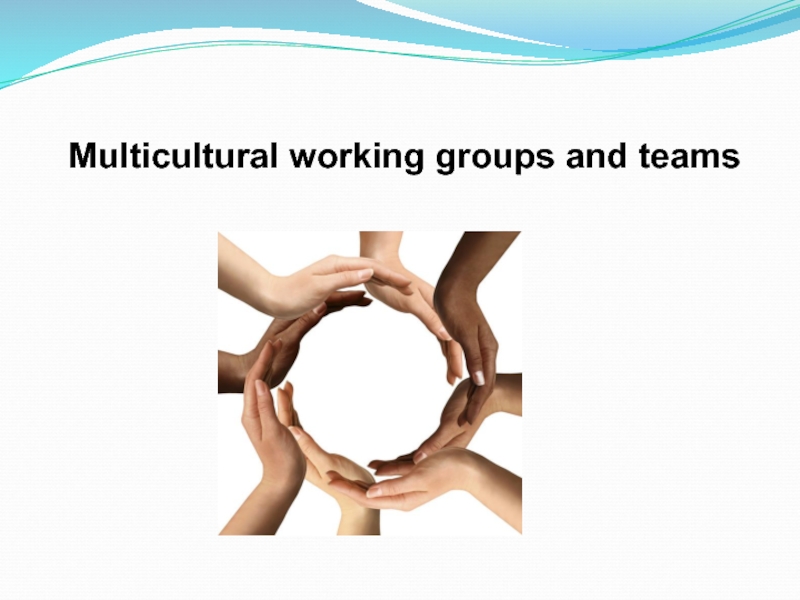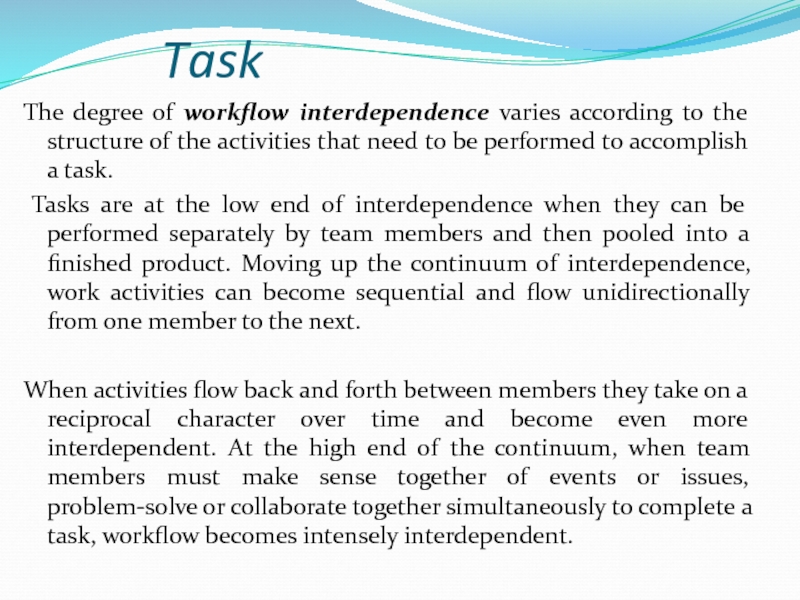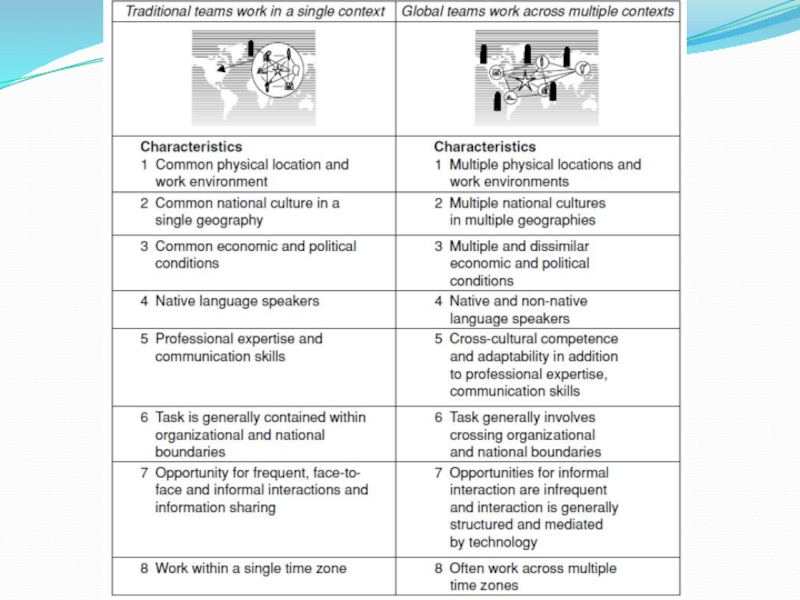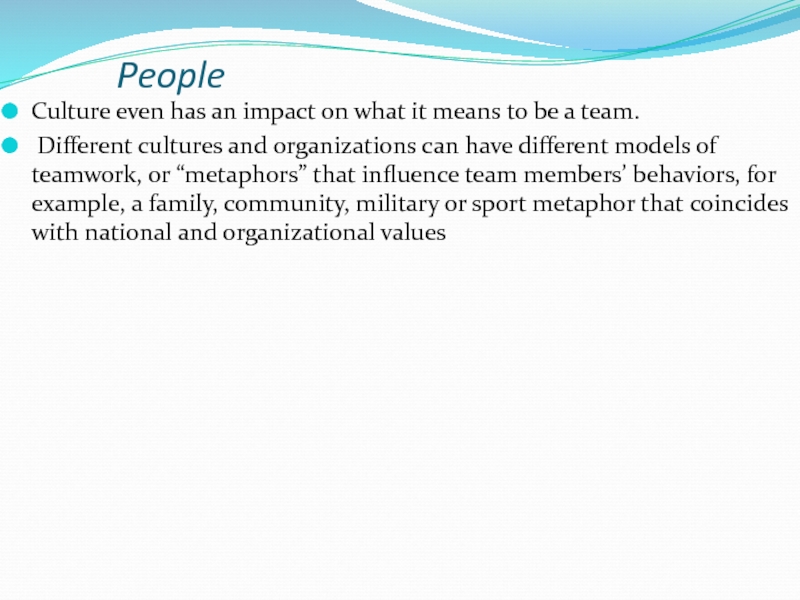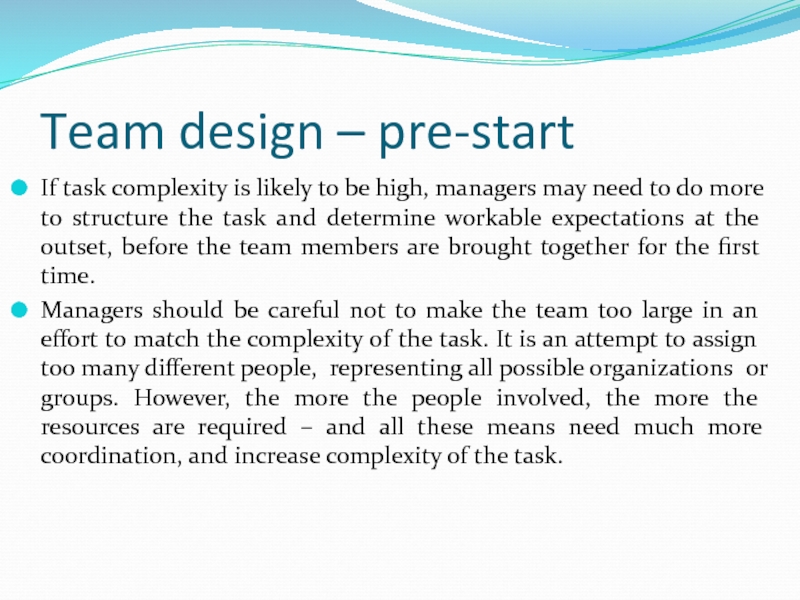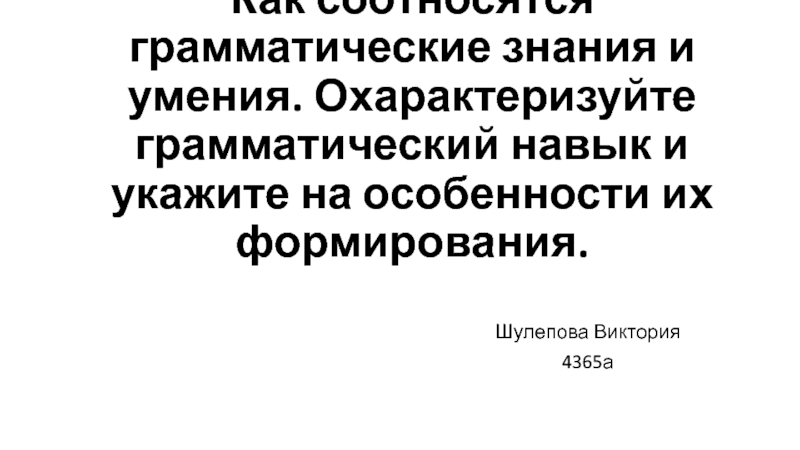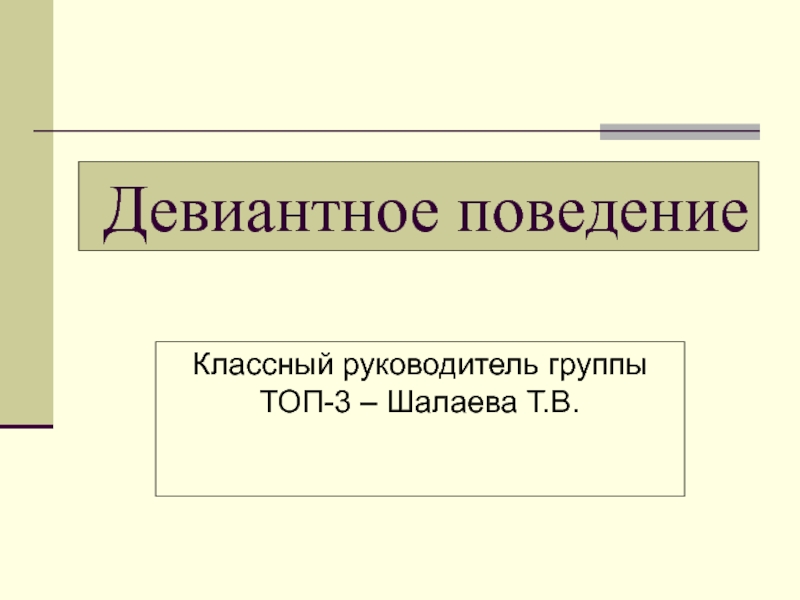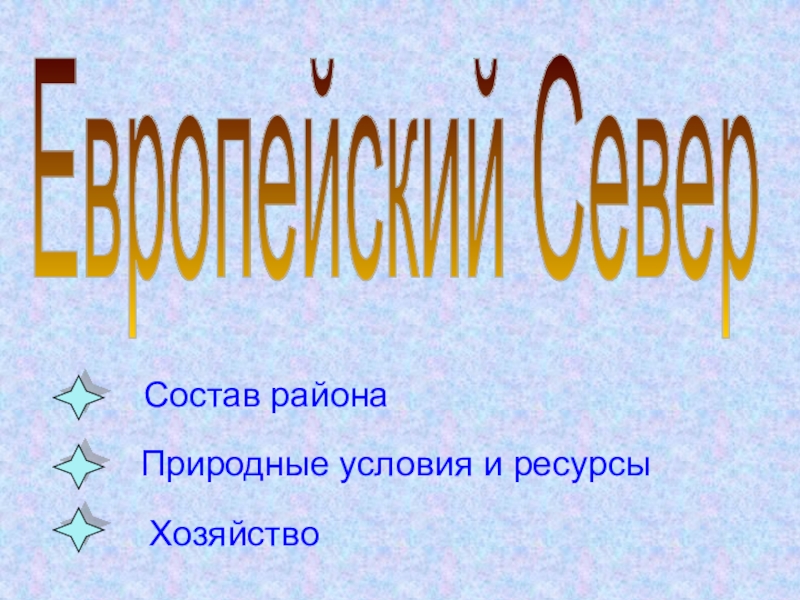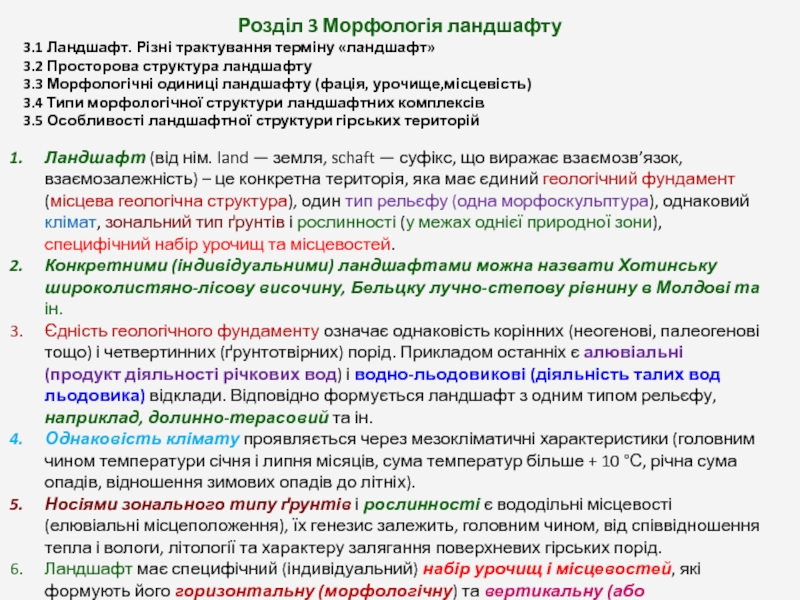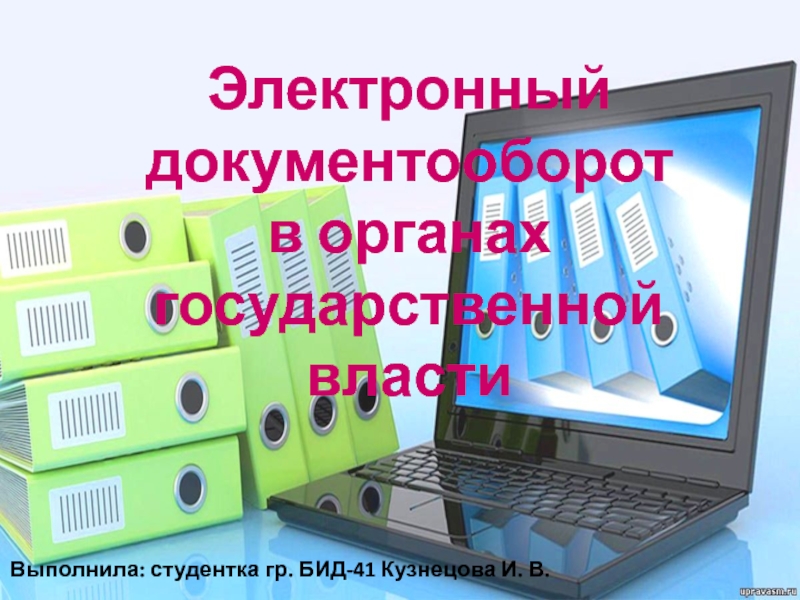Разделы презентаций
- Разное
- Английский язык
- Астрономия
- Алгебра
- Биология
- География
- Геометрия
- Детские презентации
- Информатика
- История
- Литература
- Математика
- Медицина
- Менеджмент
- Музыка
- МХК
- Немецкий язык
- ОБЖ
- Обществознание
- Окружающий мир
- Педагогика
- Русский язык
- Технология
- Физика
- Философия
- Химия
- Шаблоны, картинки для презентаций
- Экология
- Экономика
- Юриспруденция
Multicultural working groups and teams
Содержание
- 1. Multicultural working groups and teams
- 2. Слайд 2
- 3. Groups & TeamsGroup - two or more
- 4. Two kinds of the multinational teams1. Multicultural working groups2. Global teams
- 5. Multicultural Teams
- 6. Davison & Ekelund (2004) have compiled a
- 7. The impact of differences in global teams
- 8. The impact of differences in global teams
- 9. Advantages of Using a Monocultural Team:Same type
- 10. Disadvantages of Using a Monocultural Team:Groupthink--less diversity of opinion;Less sensitive to other cultures;Ethnocentrism.
- 11. Groupthink is a psychological phenomenon that occurs
- 12. Advantages of DiversityEnhance creativityLead to better decisionsMore
- 13. Advantages of Using a Multicultural Team:Multiple perspectives;Greater
- 14. Disadvantages of Using a Multicultural Team:Ambiguity;ComplexityMiscommunication;Mistrust;Stress.
- 15. Potential Problems Associated with Diversity Perceptual
- 16. Managing Multicultural TeamsSelect team members for task-related
- 17. The management of multicultural teams Those
- 18. Global teams
- 19. Complexity of Global teamsLet's speak about how
- 20. Dimensions of ComplexityWhatever the type of global
- 21. TaskTask complexity is a continuum that consists
- 22. TaskThe degree of workflow interdependence varies according
- 23. A team’s task environment can also be
- 24. The importance of this dimension for multicultural
- 25. ContextIn addition to task characteristics, global teams
- 26. Слайд 26
- 27. PeopleA primary strategy for creating global teams
- 28. PeopleCulture even has an impact on what
- 29. Time Global teams who have only a
- 30. Team design – pre-startIf task complexity is
- 31. How can a manager structure a global
- 32. Team Formation At start-up First meetingAt the
- 33. In many global teams it may be
- 34. Social processesWhen a team is formed and
- 35. Sense of CommunityThe sense of community is
- 36. Скачать презентанцию
Groups & TeamsGroup - two or more people with common interests, objectives who interact continuingly Work Team - a group of people with complementary skills who are committed to a
Слайды и текст этой презентации
Слайд 3Groups & Teams
Group - two or more people with common
interests, objectives who interact continuingly
of people with complementary skills who are committed to a common mission, performance goals, and approach for which they hold themselves mutually accountableСлайд 6Davison & Ekelund (2004) have compiled a table which gives
an overview of the ways in which differences can have
an impact on global teams.Слайд 7The impact of differences in global teams
(source: Davison &
Ekelund, 2004, pp. 232- 234, Table 12.1, adapted)
Слайд 9Advantages of Using a Monocultural Team:
Same type of managerial style/business
practices;
Consensus decision-making;
Interpersonal bonds;
Lack of cross-cultural communication barriers;
More cooperation and trust.
Слайд 10Disadvantages of Using a Monocultural Team:
Groupthink--less diversity of opinion;
Less sensitive
to other cultures;
Ethnocentrism.
Слайд 11Groupthink is a psychological phenomenon that occurs within a group
of people in which the desire for harmony or conformity
in the group results in an irrational or dysfunctional decision-making outcome. Group members try to minimize conflict and reach a consensus decision without critical evaluation of alternative viewpoints by actively suppressing dissenting viewpoints, and by isolating themselves from outside influences.Слайд 12Advantages of Diversity
Enhance creativity
Lead to better decisions
More effective/productive results
Prevent groupthink
Can
facilitate highly effective teams under right conditions
Слайд 13Advantages of Using a Multicultural Team:
Multiple perspectives;
Greater openness to new
ideas;
Multiple interpretations;
Increase flexibility;
Increase problem-solving skills;
Better understanding of foreign employees;
Ability to
work with foreign clients;Слайд 14Disadvantages of Using a Multicultural Team:
Ambiguity;
Complexity
Miscommunication;
Mistrust;
Stress.
Слайд 15Potential Problems
Associated with Diversity
Perceptual problems
When cultural diverse groups come
together, often bring preconceived, erroneous stereotypes with them
Inaccurate biases
Inaccurate communication
Attitudinal
problemsMay cause lack of cohesion resulting in unit’s inability to take concerted action or be productive
Слайд 16Managing Multicultural Teams
Select team members for task-related abilities
Team members must
recognize and prepare to deal with their differences
Team leader must
help identify/define overall goalManagers must give team positive feedback on process and output
Слайд 17
The management of multicultural teams
Those multicultural groups which appear to
have the most harmonious relations are those where its members:
have the
same statusdo not have contradictory interests
do not feel that their ethnic identity is threatened
Слайд 19Complexity of Global teams
Let's speak about how managers can create
conditions in the pre-start and start-up phases of global teaming
that will enhance the chances that a team will succeed.Слайд 20Dimensions of Complexity
Whatever the type of global team an organization
creates, the complexity the team faces in meeting its objective
can be characterized along four different dimensions:task, context, people, and time.
This section of the lecture contains a discussion of these dimensions and how they interact with one another to contribute to complexity in global teams.
Слайд 21Task
Task complexity is a continuum that consists of two major
elements:
- workflow interdependence and
- task environment.
Слайд 22Task
The degree of workflow interdependence varies according to the structure
of the activities that need to be performed to accomplish
a task.Tasks are at the low end of interdependence when they can be performed separately by team members and then pooled into a finished product. Moving up the continuum of interdependence, work activities can become sequential and flow unidirectionally from one member to the next.
When activities flow back and forth between members they take on a reciprocal character over time and become even more interdependent. At the high end of the continuum, when team members must make sense together of events or issues, problem-solve or collaborate together simultaneously to complete a task, workflow becomes intensely interdependent.
Слайд 23A team’s task environment can also be placed on a
continuum that varies from static to dynamic.
A static environment
is one that is predictable and stable and is one unlikely to disrupt team tasks or to require much monitoring. Many manufacturing settings have static environments.At the other end of the continuum, a team’s task environment can be very dynamic and contain many uncertainties. R&D teams and new product development teams often face very dynamic environments. The environment has to be monitored constantly and new information must be brought into the team for interpretation and action on a continuing basis. A dynamic environment can greatly affect a team’s ability to accomplish its task.
Слайд 24
The importance of this dimension for multicultural teams is that
if the complexity of the task is low, then there
is no need for team members to work closely together.But in case of high task complexity the team members have to interact with each other. Therefore, to perform complex tasks they should understand each other and be adapted to each other and such group needs more professional management.
Слайд 25Context
In addition to task characteristics, global teams are also complex
based on context differences. Context is a way of life
and work in a specific geographic area with its own set of business conditions, cultural assumptions, and unique history. Some of the dimensions of context are climate, nationality, education, politics, judicial systems, economic systems, corporate governance, management systems, and incentive, motivation or reward schemes. Next Figure offers a comparison on the dimension of context between traditional teams, that typically work within a single context, and global teams, that are likely to work across multiple contexts.Слайд 27People
A primary strategy for creating global teams is to involve
a variety of expertise and perspectives that are likely required
to accomplish the work and achieve objectives.This requirement means that the people who design and support, lead or work in global teams bring with them varying degrees of commitment, motivation, expectations, skills, and identities that come from their own (unique) work roles and their national, occupational, and organizational cultures. As a result, global teams are internally diverse on many dimensions, and these differences can add considerable complexity to the teaming situation in multiple ways.
Слайд 28People
Culture even has an impact on what it means to
be a team.
Different cultures and organizations can have different
models of teamwork, or “metaphors” that influence team members’ behaviors, for example, a family, community, military or sport metaphor that coincides with national and organizational valuesСлайд 29Time
Global teams who have only a short time together
(less than six months) in which to accomplish a complex
task pose the greatest challenges to team design, because they are not likely to have the luxury of time to sort out differences and problems as they arise.Therefore, it is especially important for these teams to pay careful attention to putting in place a structure that will minimize the complexity that they will have to manage.
Слайд 30Team design – pre-start
If task complexity is likely to be
high, managers may need to do more to structure the
task and determine workable expectations at the outset, before the team members are brought together for the first time.Managers should be careful not to make the team too large in an effort to match the complexity of the task. It is an attempt to assign too many different people, representing all possible organizations or groups. However, the more the people involved, the more the resources are required – and all these means need much more coordination, and increase complexity of the task.
Слайд 31How can a manager structure a global team to manage
complexity?
There are four key design techniques that help create a
supportive environment for global teams:(1) clearly specify the task objective and align it with organizational strategic initiatives;
(2) make appropriate resources available;
(3) select team members who have the skills, abilities, and experience to work in a global team, including the team leader, if appropriate;
(4) create a sense of urgency
Слайд 32Team Formation At start-up
First meeting
At the first face-to-face meeting, facilitators
can be helpful in structuring early discussions of the team’s
mission, roles, and responsibilities and in the development of norms for interaction, surfacing salient cultural differences and other contextual influences that the team will need to negotiate.Ideally, facilitators help team members learn skills for communicating and interacting effectively and can take on the facilitator’s role themselves as they work together over time.
Слайд 33In many global teams it may be advisable to begin
work with some form of organized training that is blended
with work on defining the mission and team goals.Training can provide explicit instructions about how team members are to conceptualize a problem and how to work together to accomplish an objective.
Initial training can also include skills training that can enhance collaboration, particularly cross-cultural communication, and culture-specific training to surface differences and similarities and to negotiate teaming processes.
Слайд 34Social processes
When a team is formed and first comes together
at start-up, leaders need to pay particular attention to accomplishing
three things that can significantly affect teamwork, either positively or negatively, through their initial interactions together:(1) create a working environment;
(2) develop shared “mental models”;
(3) create a sense of community.
